Over the last few years, there have been massive shifts in not just the way we work, but the way we learn. In this blog, we’ll cover how we’ve used digital social learning to recapture the magic that can happen when we come together to share knowledge – whether we’re gathering remotely, in a hybrid setting, or in person.
That magic comes from the fact that learning from each other is a bit of a superpower. A piece of research on the cultural intelligence hypothesis frames this nicely…
A landmark study by E. Hermann et al. took groups of our closest primate relatives and set them cognitive tests alongside a group of 2.5-year-old human toddlers.
That study found that while we’re on a similar level of general intelligence – things such as spatial understanding, calculations, causality…
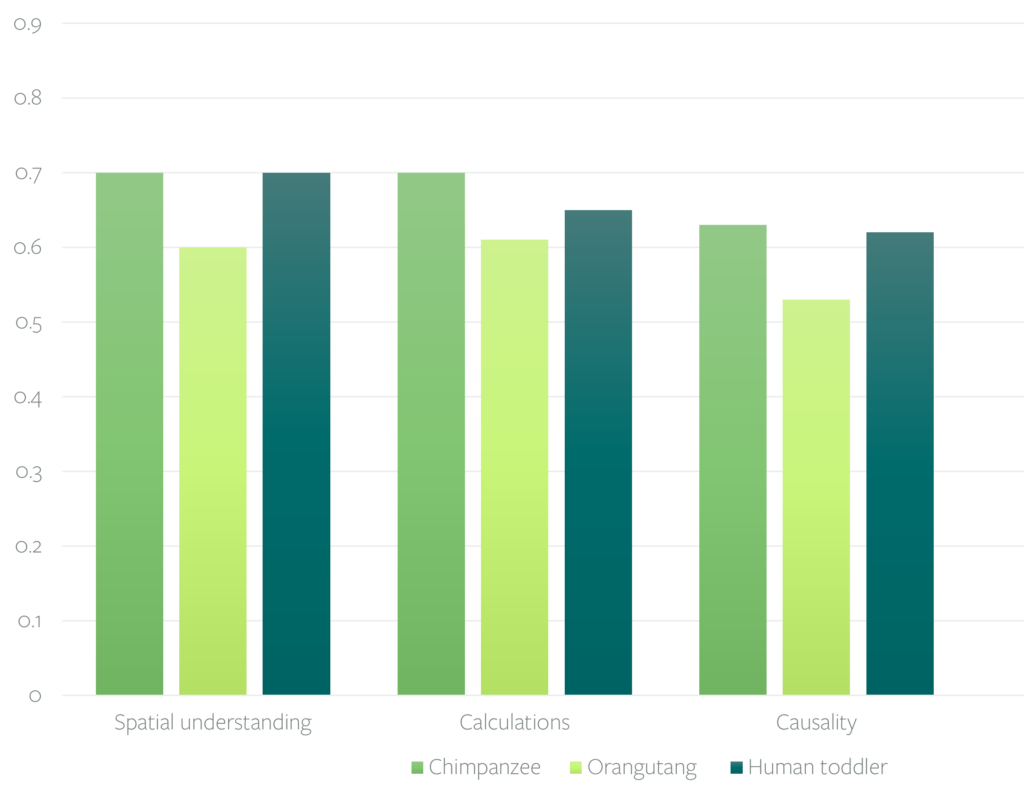
…we far outstrip these primate relatives in tasks that involve learning from each other, such as mirror matching behaviour, or interpreting another person’s intentions. In fact, the toddlers were actually about eight times more effective at learning from others – that’s our social learning superpower.
It’s probably why face-to-face was our default for most training. But now we’re working remotely, it can be hard to replicate this social learning experience.
So how do we recreate that magic of learning from each other when in person learning isn’t necessarily the norm anymore? How can we harness digital tools to get back to social learning? And is there value to adding technology to in person learning?
We’ve long been advocates of blending the experiences we create into group learning sessions. Below we’ve shared just three examples – feel free to get in touch to hear about more!
One of our more recent projects is a collaborative game for Lloyds Banking Group, where a team uses data to design and present an “Around the World” expedition to a virtual panel of stakeholder funders.
In teams of four-to-six players, they must collectively make decisions such as: what quality of data to use; work together to clean and analyse the data; use it to choose the best route, time of year, and mode of transport; decide how best to visualise it; and then create a convincing story to secure funding for the world trip.
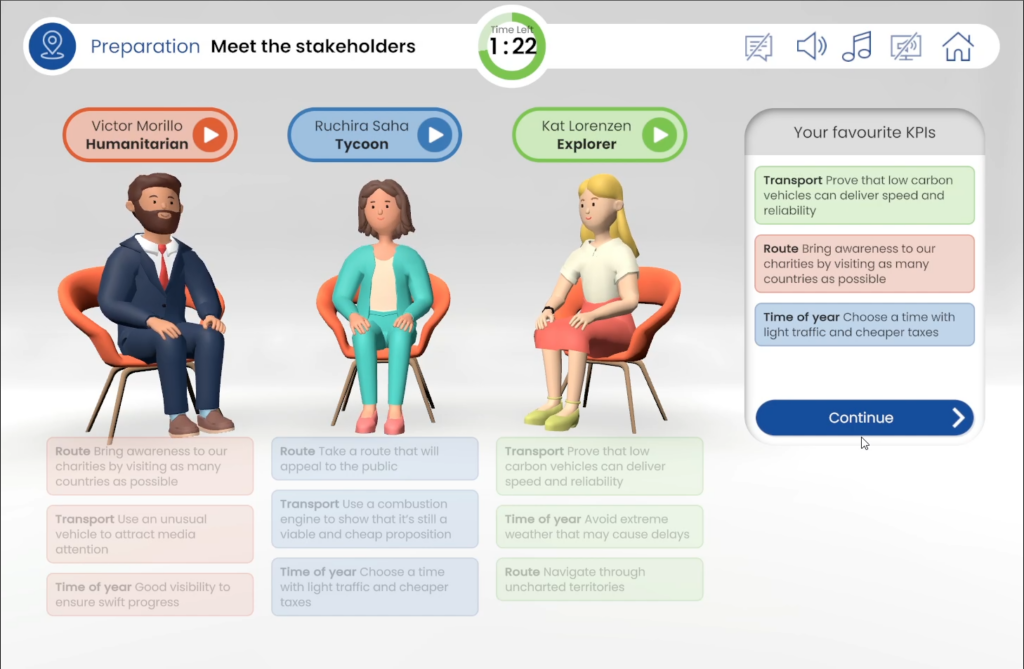
Players get together over a video call, logging into their own instances of the game so that everyone’s progress is tracked. An elected team leader drives the game and throughout it team members can take on different tasks such as analysing specific areas of data to help the group make decisions more easily and quickly.
Towards the end of the game, the team has to decide how to use their data to back up their proposal, using appropriate visualisations and storytelling to either secure funding – or, if they fail, remain grounded.
The game is designed for mixed ability groups, including experienced data practitioners and a more general audience. This led to those with less experience learning from the practitioners, but also allowed for the practitioners’ assumptions to be questioned, often challenging their accepted view of their role and practices.
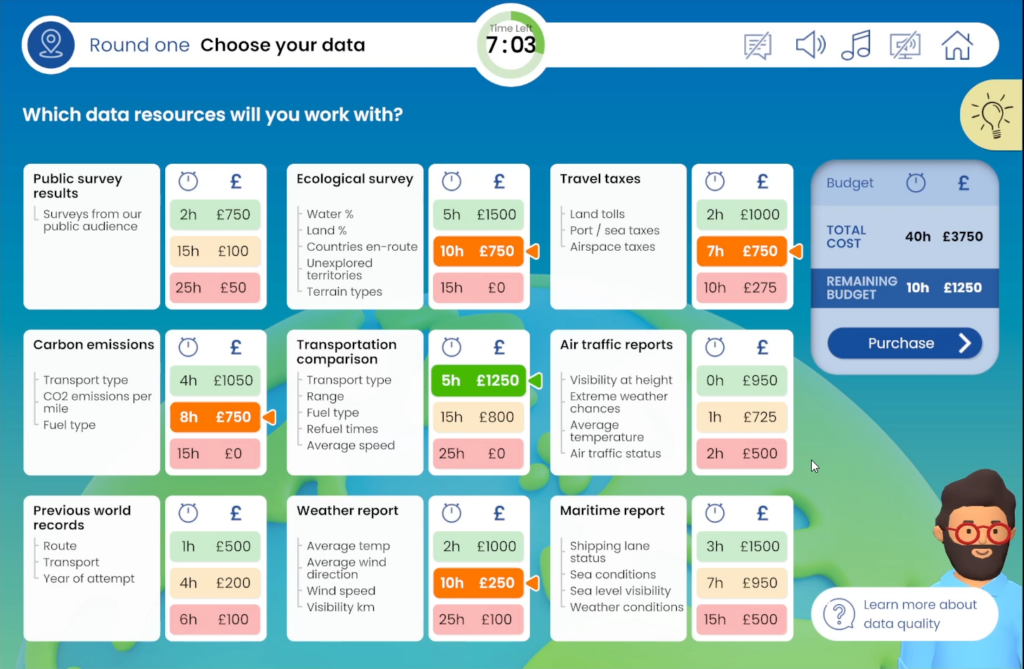
We will be gathering lots more efficacy date over the next 12 months and hope to share our deeper learnings with you (and perhaps some awards panels) in due course!
We worked with NATS on revamping its basic engineer training which introduces learners to the key principles of air traffic control management and the important role they play as engineers.
The previous solution was a traditional classroom session that could run in person or remotely. But NATS was keen to ensure the experience was just as valuable for remote participants as it was for those in person. So, NATS worked with us to improve the experience for all participants, wherever they were, and to look at digitising content to help reduce overall seat time.
We created a networked solution that allows all learners to use their own devices (mobile or desktop) to log into the same session whether they’re in person or remote. Everyone submits answers using their own device, and can see their own score against the class average without having to see a leader board which can negatively impact motivation.
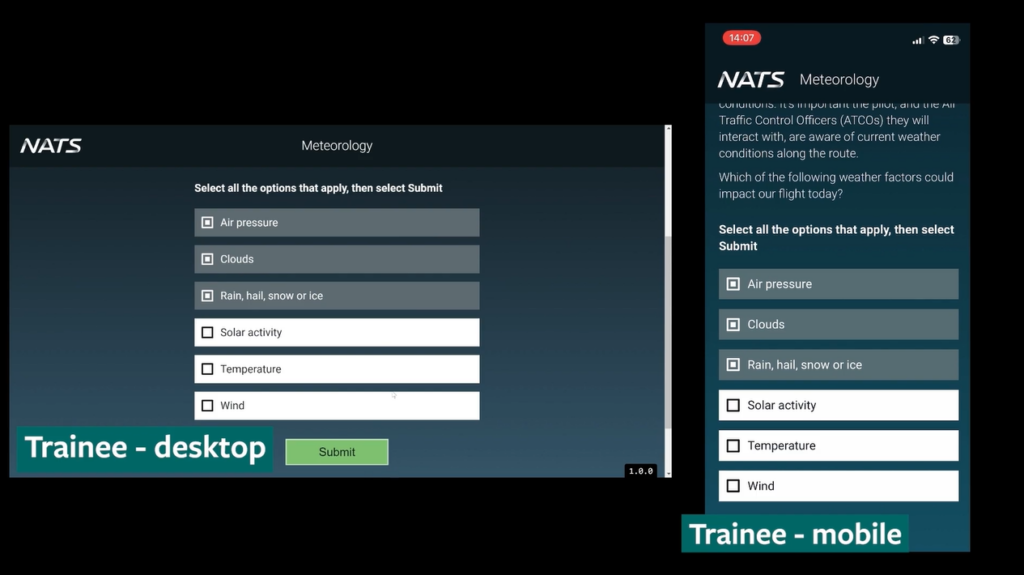
The learning is focused on a series of scenarios set in and around a fictional airport. Learners use the knowledge and analytic skills they gained from the digital modules to answer questions about the correct actions and equipment needed to ensure air navigation around the airport is functional and safe. At the end of each scenario, the learners see an animated 3D outcome to reinforce the learning.
The networked solution puts everyone on an even footing – whether they’re in person or remote, or whether they’re new graduates or are experienced engineers making an industry move. Everyone can interact with the scenario by inputting their answers even if they don’t feel so confident to call out answers in class, and still see if they got it right.
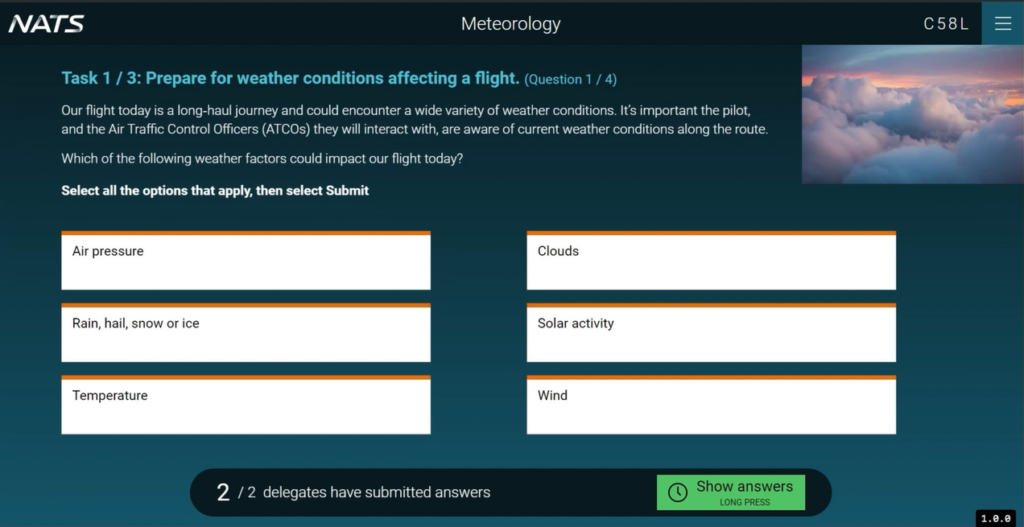
Those motivated by competition can try to stay ahead of the average accuracy for the class. Instructors get an overview of how the class is doing and which areas delegates are struggling with, and optimise class time by using it where it’s most needed.
Even with a wholly in-person learning experience we can use technology to add something a bit different. For one company, we created a mixed platform game where two participants in VR try to beat cyber security defences, while a tablet team tries to ward off their attack.
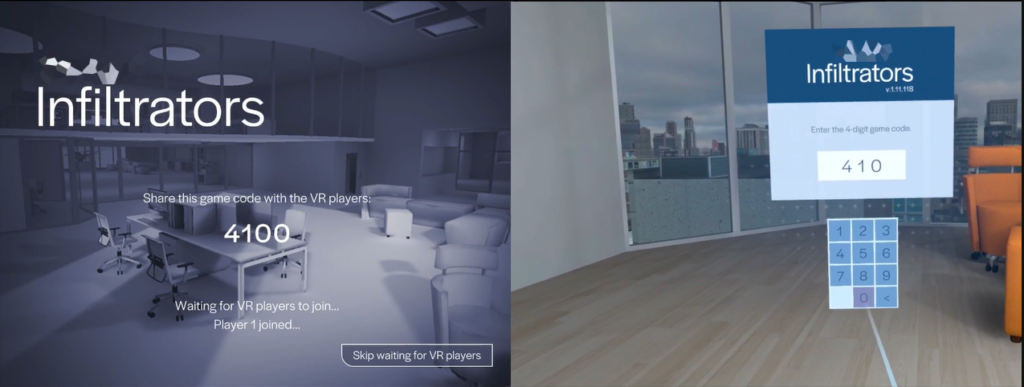
For example, the VR players might find plug a USB into an unattended PC, triggering an alert on the tablet and a decision for that team – should you pull a senior engineer back from their honeymoon to deal with the threat?
Aimed at C-suite executives, the game appeals to their competitive nature through scoring mechanisms, with the content itself based on real-life cyber security stories that will resonate with the audience. The tablet team has to work together against the clock to make pressured decisions on how to deal with the VR players’ attack, while the VR team can work closely or split up to cover maximum ground within their environment.
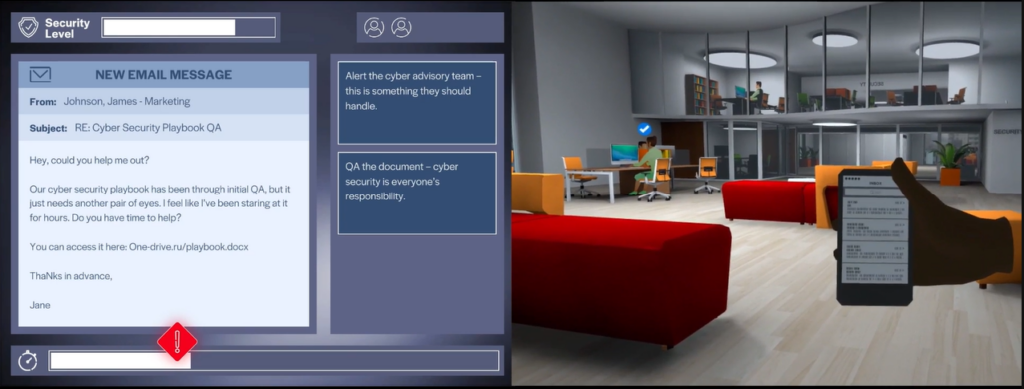
Whatever the learning experience you want to create, there’s always plenty to think about to ensure a successful deployment.
Looking to create your own social digital learning experience? We’d love to talk the possibilities through with you. Fill in the form below or drop us a line at info@makereal.co.uk.
We’re always happy to talk to you about how immersive technologies can engage your employees and customers. If you have a learning objective in mind, or simply want to know more about emerging technologies like VR, AR, or AI, send us a message and we’ll get back to you as soon as we can.